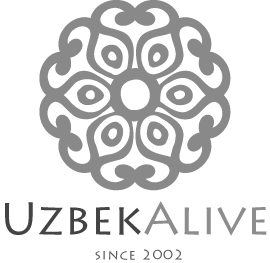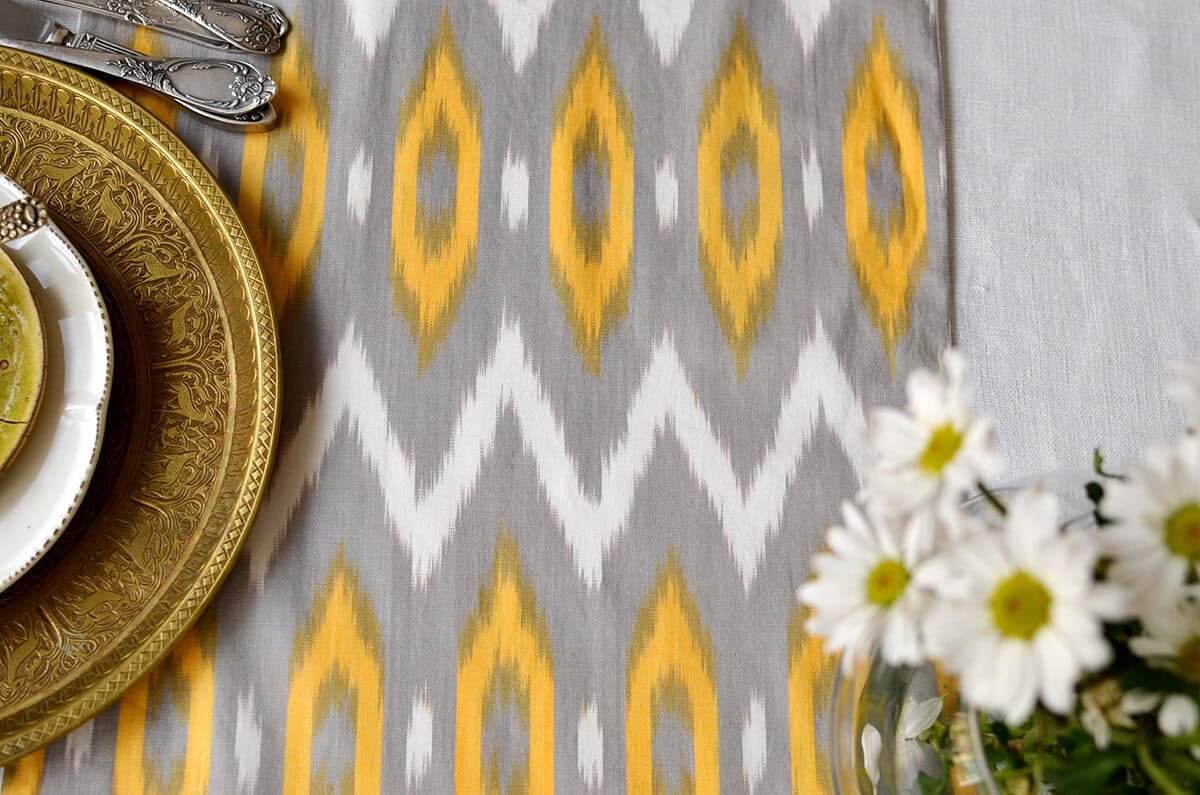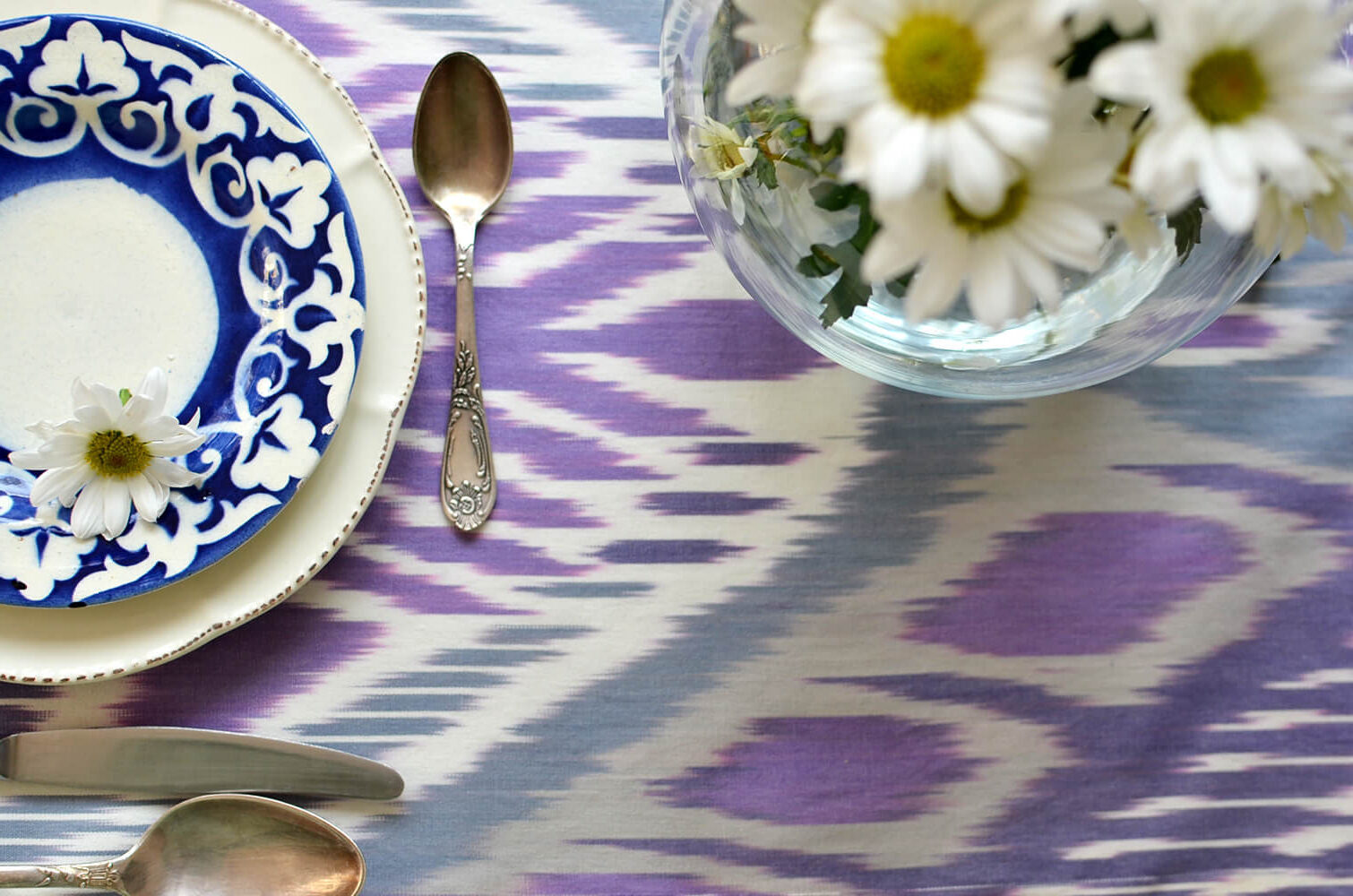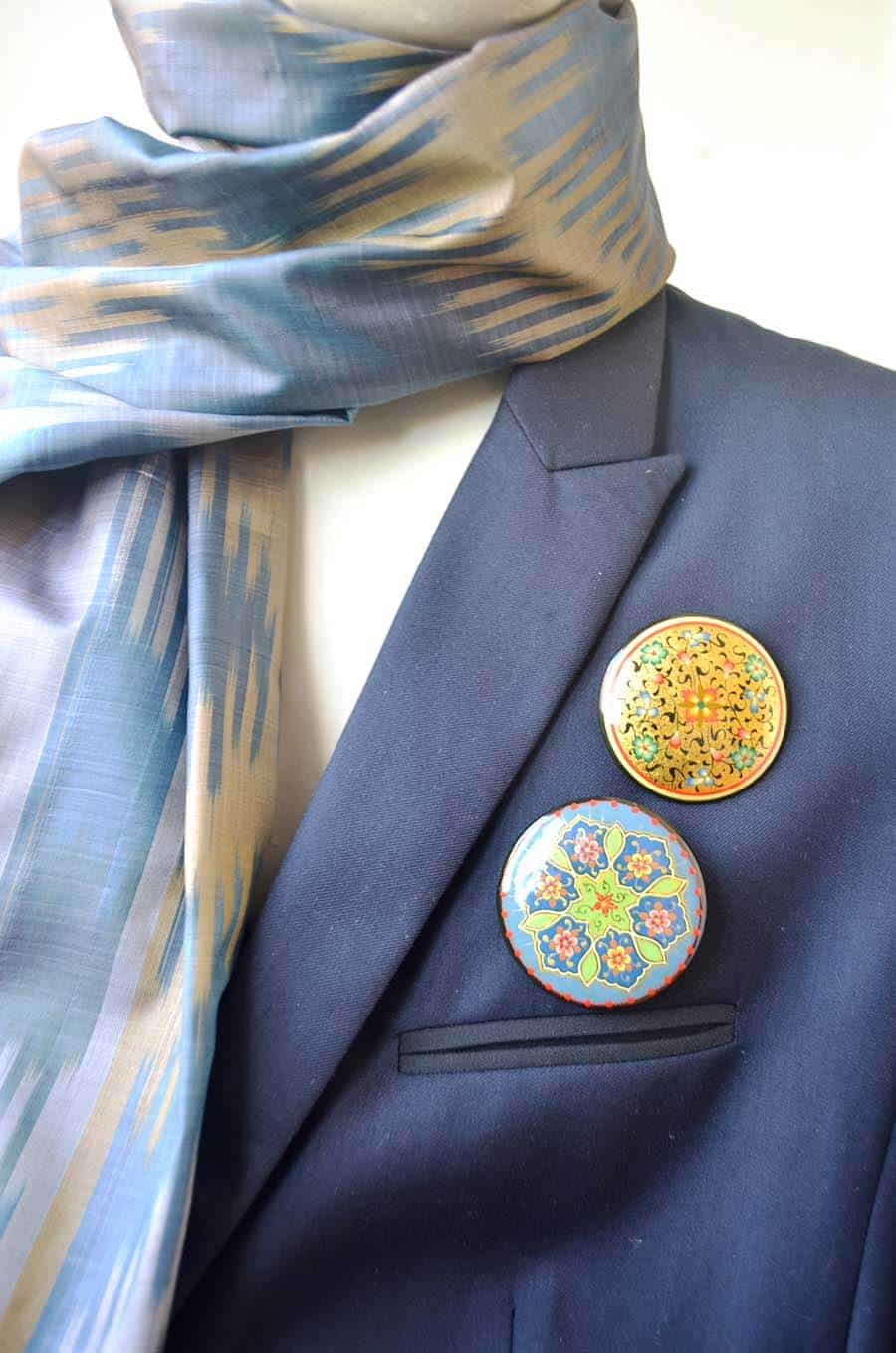1960s’ Uzbekistan, clay walls, floor mats, ikat dress and a skullhat
“Visiting an Old Kolkhoz Farmer”1964 photo album of Central Asia and Kazakhstan “Visiting an Old Kolkhoz Farmer”—this is the title of a photograph from the 1964 album Central Asia and Kazakhstan. Several interesting details stand out in this image: The simple clay walls contrast with a shelf of china, possibly Russian porcelain. Large trays symbolize hospitality
Yellow Ikat Cotton Table Runner: Hand Wash Test Before And After
Ikat fabrics are known for their vibrant patterns and artisanal craftsmanship, but maintaining their beauty requires careful attention. To ensure the Yellow Ikat Cotton Table Runner is durable and easy to care for, we conducted a wash test to examine its color retention, texture, and overall quality after washing.
Wash Test Procedure For The Yellow Ikat Cotton Table Runner
Before offering this elegant piece to our customers, we subjected it to a step-by-step wash test to evaluate its durability. Here’s the precise method we followed:
Washing Process
- Filled a basin with lukewarm water (30°C).
- Added a small amount of shampoo or a mild detergent to preserve fabric integrity.
- Gently hand-washed the fabric, avoiding scrubbing to prevent fiber damage.
Lavender Ikat Table Runner: Wash Test
Ikat fabrics from Uzbekistan are renowned for their luxurious appeal, but traditional varieties often require dry cleaning, making them less practical for everyday use. However, some ikat fabrics can be hand-washed.
The purpose of this post is to document our testing of lavender ikat fabric before transforming it into a table runner. Our goal is to ensure that the fabric passes the “hand-washable” test without compromising its handmade luxurious vibrancy and texture.
Thorough Testing Before Crafting the Table Runner:
Before turning our exquisite ikat fabrics into table runners, we ensure they undergo a wash test. This step is essential to guarantee the fabric remains vibrant and intact after washing.
Here’s the Ikat Fabric Washing Test Procedure:
Washing Process:
- Fill a basin with lukewarm water (30°C).
Why UzbekAlive’s Handcrafted Brooches Are a Must-Have
How can a small accessory like a handcrafted brooch make such a big impact? Brooches have stood the test of time, adding elegance, creativity, and personality to outfits across generations. At UzbekAlive, we’ve redefined this timeless accessory by combining traditional Uzbek artistry with contemporary design.
Our handcrafted brooches, created in collaboration with Tashkent-based artisan Koshib Omonov, are wearable works of art. By infusing rich cultural heritage into modern fashion, we’ve created brooches that are not only beautiful but also versatile and meaningful.
Read ahead to discover why UzbekAlive’s brooches deserve a special place in your wardrobe.



